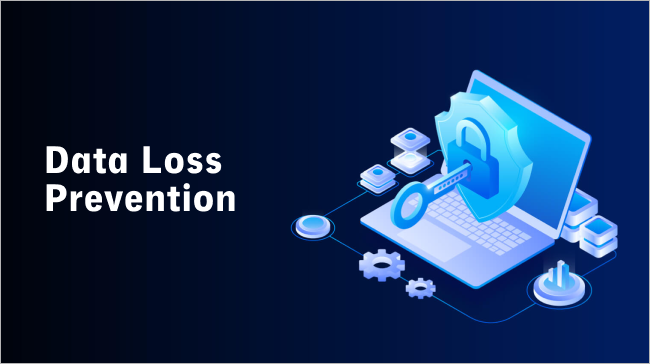INTRODUCTION:
In today’s digital landscape, businesses have found a transformative solution that drastically reduces costs associated with maintaining onsite servers and recruiting IT experts. As companies grow and their needs evolve, cloud computing services providers step in, offering seamlessly adapted services, ensuring businesses are billed only for the resources they use.
However, with this increasing shift towards the cloud, a pressing question emerges: “Is our data genuinely secure in the cloud?” While the cloud is designed with top-notch security measures, it isn’t impervious to threats. Challenges can arise from various quarters, be it human errors, cyberattacks, technical disruptions, or even natural calamities.
Being well-informed about these potential risks is crucial. This article aims to spotlight the main vulnerabilities associated with cloud data and provide actionable strategies to enhance its protection.
Secure Your Data in the Cloud with Layer One, Your Trusted Cloud Computing Partner.
What is Cloud Computing?
Cloud computing is a modern approach where businesses tap into IT services and resources over the internet, hosted on external platforms. Instead of having their computer systems or servers, organizations lean on these platforms in specialized facilities called data centers. Third-party companies expertly manage these centers.
With cloud computing services, businesses can run various applications and store vast amounts of data. The standout benefit is the ability to access this data and applications from the company’s base and anywhere with an internet connection.
Cloud Computing: Risks to Be Aware Of
While cloud computing offers numerous advantages and built-in security measures, it’s not without its vulnerabilities, especially concerning data loss.
Here are the most common factors for data loss in the cloud:
Unintentional Deletion and User Mistakes
Often, the simplest errors can lead to significant data loss. Human errors are a frequent culprit, whether accidental file deletion, misconfigured settings, or oversight in data backup. While many cloud platforms offer automated backup systems to retrieve lost data or restore previous document versions, the recovery window can vary based on the platform and backup settings.
Comprehensive staff training and robust data management policies become essential to mitigate these errors.
Cyber Threats
One of the leading culprits behind data loss in the cloud is cybercrime. As more and more businesses shift to cloud storage for their valuable data, it becomes a tempting target for cybercriminals. They’re constantly devising new methods to breach these systems.
Common attacks include ransomware, where valuable data is locked and a ransom is demanded for release, and phishing schemes that trick individuals into revealing sensitive information. Such breaches jeopardize the data’s safety and can inflict lasting damage on a company’s reputation and financial well-being.
System Failures
The cloud, while efficient, is not immune to technical hiccups. System failures, whether they stem from hardware issues or network glitches, pose a real threat to data stored in the cloud.
Many businesses trust cloud platforms and data security services to safeguard their essential data.
However, when hardware components malfunction, there’s a risk of losing data permanently, especially if there aren’t proper backup measures. Similarly, interruptions in the network, especially during crucial tasks like transferring or saving data, can lead to incomplete files or data loss.
This situation highlights the importance of integrating reliable data security services and ensuring continuous system monitoring to prevent mishaps.
Natural Disasters
Unpredictable events from nature, such as floods, storms, and earthquakes, can pose serious challenges to the facilities storing our digital data. When affected, these facilities, referred to as data centers, can lead to potential data loss. In light of such risks, the role of backup and disaster recovery services is paramount. They ensure our digital information stays safe and reachable, even when confronted with nature’s unforeseen challenges.
Overwriting Data
Just as we might accidentally save a document on our computer, data stored online can also be mistakenly overwritten. This can happen either by users or the very applications meant to manage the data. Software as a service (SaaS) applications, popular tools for businesses, can sometimes be a culprit.
These applications handle and update vast amounts of data regularly. As they bring in new data, there’s a risk that it might replace or overwrite existing data, leading to potential data loss or corruption.
Vulnerable APIs
Application Programming Interfaces, or APIs, are the bridge that allows different software and applications to talk to each other, especially in the cloud. However, if these APIs aren’t set up or managed correctly, they can become weak spots. Attackers can take advantage of these vulnerabilities in APIs to sneak into the cloud without permission.
Ways to Prevent Data Loss in Cloud Computing: Tips from Layer One Networks

In the digital age, safeguarding cloud data is of utmost importance. At Layer One Networks, a prominent IT services company in Corpus Christi, we prioritize the dual goals of data security and accessibility in the cloud.
Here’s an overview of our best practices to prevent data loss in the cloud:
Regular Data Backups
One of the cornerstones of effective cloud data management is the practice of regular data backups. These backups, integral to disaster recovery planning, ensure that data remains safe and retrievable, even in unforeseen circumstances. Especially for sensitive or invaluable data, having backups stored in locations separate from frequently accessed cloud resources is crucial.
Let’s delve into the various backup methodologies:
- Full Backup: This is the most comprehensive form of backup. It involves creating a copy of every data stored in the cloud and capturing all files, documents, and system settings. Typically done on a set schedule, like weekly or monthly, full backups are resource-intensive and time-consuming but offer the highest level of data protection.
- Incremental Backup: As the name suggests, this method only backs up data that has changed since the last backup. This could be new files, updated documents, or deleted data. It’s more resource-efficient than full backups, as it only captures recent changes.
- Differential Backup: This method saves all data that has been changed or added since the last full backup. It doesn’t consider the incremental backups done in between, making it a middle ground between full and incremental backups in terms of resource usage.
- Change Data Capture (CDC) Replication: An advanced backup technique, CDC replication focuses on tracking and recording changes made to a system or database. By replicating modified data, it reduces backup times and conserves resources, all while ensuring that backups remain current.
Disaster Recovery Planning
Preparing for the unexpected in cloud computing is not just advisable; it’s essential. Disaster recovery (DR) planning serves as a blueprint for responding when unforeseen events threaten data integrity and availability. Here’s what goes into crafting an effective disaster recovery strategy:
- Risk Assessment: Before preparing for potential threats, you need to know what they are. Risk assessment involves identifying vulnerabilities within your system and understanding the potential impact of different disaster scenarios.
- Business Continuity Plan: This broader strategy encompasses DR. It outlines how business operations will continue in the face of disruptions, ensuring minimal downtime and financial loss.
- Data Backup: Regularly backing up data ensures that a recent copy is available for restoration, even if the primary data source is compromised.
- Versioning & Snapshots: This involves maintaining different versions of data. You can revert to a previous, uncorrupted version if a recent version is corrupted.
- Penetration Testing: Sometimes, the best way to find vulnerabilities is to simulate an attack. Penetration testing involves ethical hackers trying to breach your system to identify weak points.
- Revising Data Governance Policies: As threats evolve, so should your policies. Regularly revisiting and updating data governance policies ensures they remain relevant and effective.
Data Encryption
Encryption acts as a digital safeguard, transforming sensitive data from its original, understandable form into a scrambled, encoded version known as ciphertext. This ensures that its true content remains hidden even if data is accessed without the proper decryption key. Especially in remote work, encryption allows employees to access crucial data from any location securely. Moreover, in the face of potential breaches or unauthorized access, encrypted data remains unintelligible, protecting against malicious threats.
Training Employees
Often, the weakest link in cloud security isn’t the technology but the people using it. Many data breaches occur when individuals are deceived into sharing their access details. Educating all cloud users about the dangers of suspicious links in emails is crucial, as these are often phishing attempts disguised as legitimate communications.
Implementing two-step verification for employees adds an extra layer of security, making it harder for unauthorized individuals to gain access. By investing in training and robust security measures, businesses can greatly minimize the risk of data breaches in the cloud.
Reliable Cloud Storage Provider

Choosing a reliable cloud storage provider is paramount for safeguarding your data. The cloud landscape offers various services, each tailored to specific needs:
- Infrastructure as a Service (IaaS): This service provides virtualized computing resources over the internet. It’s akin to renting IT infrastructure—servers, storage, and networking—without the need to purchase and manage the physical devices.
- Software as a Service (SaaS): SaaS delivers applications over the web, eliminating the need to install, run, or maintain them on individual computers. Common examples include email services, calendars, and office tools.
- Platform as a Service (PaaS): PaaS offers a platform that allows customers to develop, run, and manage applications without the intricacies of building and maintaining the infrastructure.
The choice between these services hinges on your specific requirements and objectives. Beyond the type of service, it’s crucial to ensure that your chosen cloud vendor possesses the necessary certifications to adhere to industry regulations and standards.
How Can Expert Cloud Computing Services Providers Assist
Lost, stolen, or corrupted data can disrupt your operations and ruin your business. It can also open you to financial loss, fines, and reputational damage. Although data storage may never be perfect, cost-effective solutions are available to mitigate risks and provide security.
Layer One Networks stands out as a provider that offers a range of cloud solutions and emphasizes security and compliance. With a comprehensive understanding of the cloud ecosystem and industry-specific needs, we ensure businesses can confidently transition to the cloud, backed by top-tier data protection.
Collaborating with us guarantees peace of mind, as you’ll know your data is secure and your cloud strategy is aligned with the best industry practices.





